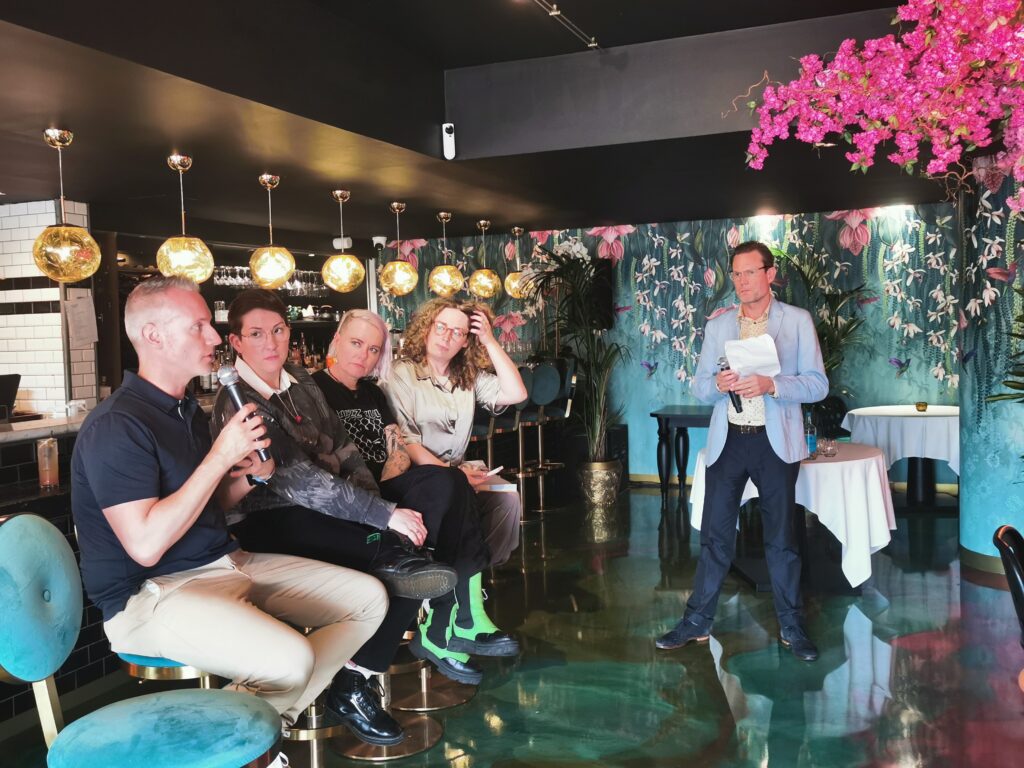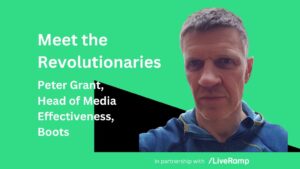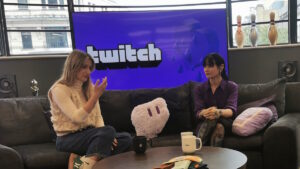Has Diversity, Equity & Inclusion (DEI) fallen down the organisational agenda over the past year? Does the initialisation LGBTQIA+ still serve a useful purpose? What does being an ally to the community actually mean in 2024?
These were among the questions posed to a panel of media industry experts at NDA’s recent Media Pride 2024 event. NDA’s editor Justin Pearse chaired the discussion, where he was joined by Chris Dunne, Head of Marketing at Thinkbox and Joint CEO for Outvertising; Laura Jordan Bambach, Founder & Chief Creative Officer of Uncharted; Marty Davies, cultural strategist Campaign columnist and founder of both Smarty Pants Consultancy and Trans+ History Week; and Sonnie Spenser, Digital Marketing Manager at Fresh Pies, and Communications Co-Director for Outvertising.
The discussion began with panel members acknowledging a lurch to the right in public discourse that risks undoing much of the progress made in recent times.
Dunne said: “When we consider the ‘far right’ riots that took place earlier this year, I think that, as an industry, we need to spend some time scrutinising the media’s role in fueling that moment. Over the past year, there’s been a de-prioritisation of DEI across the board. We may not feel the impacts of that straight away, but I think we will in no time.”
Bambach agreed: “It’s worrying how much things have rolled backwards. There’s a huge amount of toxicity and a real violence towards the trans community, in particular, which is disgusting. We’re also seeing brands pulling back on activity in support of the LGBTQIA+ community. The sort of activity that only a few years ago would have been seen as rather basic or shallow support for the community is now, in the current climate, probably quite brave.”
There are, however, pockets of positivity to be found, argued Bambach: “The gaming ecosystem has traditionally been an absolutely awful place for our communities and also for women in general. There’s a real movement now in terms of gaming influencers with big followings pushing a much more inclusive agenda. That’s really exciting and potentially very helpful.”
Representation renewed
Spenser discussed how use of the term ‘LGBTQIA+’ has become both useful and problematic.
“It lumps the queer experience into one big block, and we all know that there is a huge range of experience within that set of initials. It’s also a ‘safe’ way of referring to trans people and other marginalised groups without referring to us directly.
“On the other hand, wider use of the term means that we are able to shine a little light on a border range of identities.The intersex and asexual experience, for example, is something that has long been entirely ignored by marketers.”
Spenser pointed to the success of a recent National Lottery commercial, which told the story of a white, male gay couple over the course of their 25-year relationship.
“The reason why the ad did so well was it humanised us. It didn’t focus on the gayness, but on the optimism and the love and the idea of a life lived with someone over many years. Things that everyone can relate to, for the most part.
“As marketers, it can be difficult to represent anything other than a binary sexuality. You can represent lesbians; you can represent gay men. Bisexuality is harder to represent, but it’s doable if there’s a will to do it. Non-binary and trans identities are difficult, but they are doable. Asexuality is possible. We have teams full of really creative, thoughtful, imaginative people, who are more than capable of solving these problems if they are asked to.”
Dunne added: “A lot of brands will default to the acceptable face of representation, which is the white, cis, gay man, but we need to be working harder to give brands and their agencies the tools and the impetus to be representing a far wider range of people.”
Say it loud
Davies pointed out that, despite recent trends among brands’ marketing output, the business case for inclusion is stronger than ever.
“There’s this myth, this wrong-headed idea that’s taken hold that: ‘You go woke, you go broke.’ All the evidence we have – including an excellent new study from the Unstereotype Alliance – shows the opposite is true, inclusion delivers growth.
“Inclusive, diverse workforces consistently show higher than average levels of innovation and creativity. Recent research from Deloitte found that diversity of thinking brings about a 20% increase in creativity and innovation.
Inclusive media campaigns deliver enhanced sales performance both in terms of short-term revenue gains and long-term customer loyalty. That could be the difference between your business being the next Netflix or the next Blockbuster.”
Davies also called for more support and funding for queer media titles.
“We’ve seen a 170% increase in stories about Trans+ people over the last five years and a 110% increase in hate crime towards trans people over the same period. There’s lots of hot air about Trans+ people out there, but very little written by Trans+ people. Those stories are being told largely in the queer media, which historically has always been underfunded.
“While we have tabloids pumping out sensationalist and misinformed content that’s doing great harm to our community, the minimum we can do is make sure that we’re also investing in queer media outlets.”
The panel unanimously agreed that a subscription to queer run journalism was also vital to support queer talent, and just as affordable as existing industry titles. QueerAF, the UK’s only non-profit and regulated LGBTQIA+ publisher, was flagged as a gold star example.
Lean on me
Dunne commented that that there is still a huge amount of positivity and comradeship among wider society for the LGBTQIA+ community to draw upon.
“The question we get asked the most: what can I do to help? We’ve spent a huge amount of time this year compiling our Outvertising Advocacy Playbook, which is specifically designed to answer that question.
“No matter where you are, what part of our industry, what level of seniority you are, you will find some guidance on what you can do within your organisation to drive greater inclusion. We also offer pointers on how to have the conversations needed to make sure that both your creative work and your media is more inclusive.”
Spenser offered the following advice to creative teams looking to improve the inclusivity of their output: “Do the homework and get ready for a bit of discomfort. Stick to your guns. Prepare yourself and get out there. It’s never going to be perfect. Always factor in shenanigans along the way.”
Bambach believes the most important thing is for us all to keep on talking.
“There are still so many discussions that we don’t have. Yes, it’s more difficult to represent the Bi+ experience, but it is possible. We can see where the tensions are. Why aren’t we actively leaning into that? Let’s bring people together. Let’s create space to talk about this stuff.
“To me, right now, it feels like there’s a bit more organisation, and we are being a bit more vocal because of the pushback we’ve seen over the last 18 months. I’m really optimistic that we’re going to kick some butt.”










